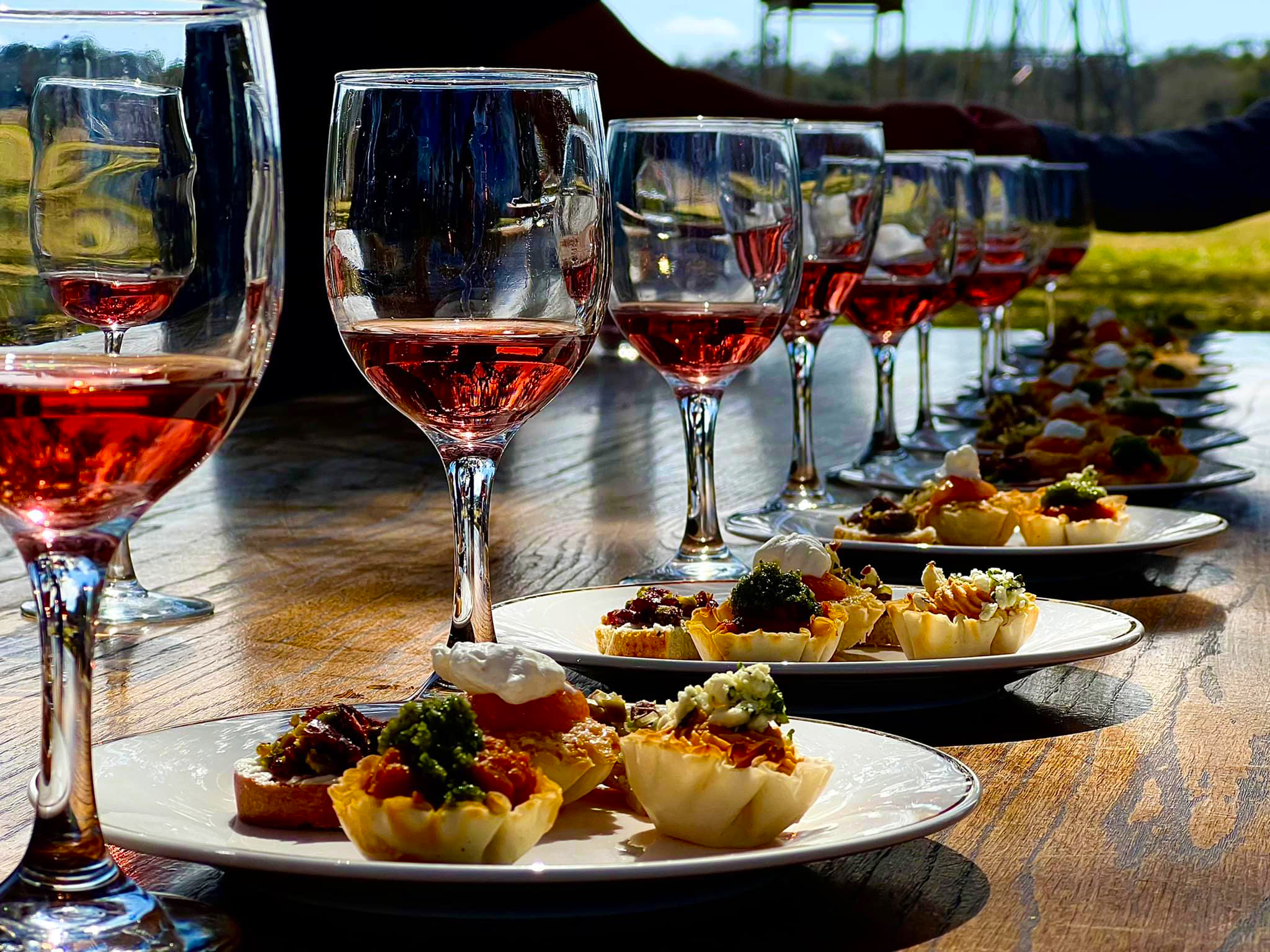Wine with Food
Archaeologists date the origin of wine making somewhere between 8000 BC to 5000 BC. Originating around Armenia and Georgia, their ancestors would bury grape juice in the ground for the winter. By shear necessity they discovered the very basics of wine making. This fermented grape juice became common as it was more sanitary than the water supply.
Although originally a preservation method, wine making soon became treasured for its unique taste and “magical” effects; and more focused and thoughtful production began. In 2011, the world’s oldest known winery was unearthed in Armenia, dating back to 4,100 BC. Although it is unclear when our ancestors started pairing wine with food for pleasure, it’s an undeniable part of our current culinary culture. And during the 1980’s it accelerated into an art form. Chefs and restauranteurs provided more than just a meal, it became about the whole experience.
When pairing wine with food there are only three possible outcomes – the food dominates, and the wine is either lost or ruined; the wine overpowers the food making it bland; or the pair harmonize, creating a sublime experience. The latter, of course, is the goal, but the most difficult to achieve.
Some basic tips to consider when creating the perfect food/wine marriage – acidity, flavor, weight of both the wine and food; the tannin level of the wine; and the texture and temperature of the food.
Acidity
Wine with high acid will usually taste crisper and more tart on the palate. A low-acid wine will feel smoother and rounder on the palate. It keeps wine feeling fresh, provides structure for whites, and cuts through richness in food. Acidity also provides some of the backbone needed for long-term aging, so high acid wines are more likely to improve with time than those with lesser amounts.
Acidity in wine pairs well with fatty and sweet foods. It also helps balance salty flavors.
The wine’s acidity should be at least equal to the food’s acidity.
Tannin
Tannins give wine a bitter, astringent, and puckering quality. This is like the feeling you get from drinking black tea or eating dark chocolate. Along with acidity, tannins are a key component in the structure and body of red wine. When red wine is described as dry, it’s the tannins that are creating that characteristic.
Pair with fattier foods. This will smooth out the wine and cut the richness of the meal.
Avoid salty foods as they can clash with tannins and give the wine a more astringent taste.
Flavor
Match the flavor intensity and character of the wine and food.
Pair spicy food with a slightly sweet, lower alcohol wine.
Pair bitter wines with sweet foods.
Weight
Keep the food and wine at a similar weight. The weight of the food generally refers to its richness – fat content and spice level. It can also relate to the method of cooking; for example, a poached dish, grilled item and long braise would require and increasingly full-bodied wine, respectively.
Lighter wines are typically white, but a low tannin, low alcohol red would fit the bill.
Soften bitter tannins with richer, heavier foods.
Texture & Temperature
Crispy foods pair well with sparkling wine.
Creamy dishes require a full-bodied wine to cut through the richness.
A fresh, hot roasted chicken is perfectly matched with a medium-bodied red, but served chilled is complimented by a rosé.
Valentine’s Day Dinner 2024
Mussel Chowder
Fennel | Saffron | White Wine
Sauvignon Blanc
The citrus notes and high acidity of Sauvignon Blanc complement the briny sweetness of mussels. Its crispness also pairs nicely with the subtle spice of fennel and saffron.
Duck Breast Salad
Blood Orange | Belgian Endive | Hazelnut
Pinot Noir
A classic pairing, both offering moderate intensity, with pinot noir’s acidity balancing out the fattiness of duck. Also, the fruity notes in pinot compliment the blood orange and hazelnut.
Miso Marinated Hanger Steak
Roasted Garlic Custard | Olive Oil Poached Tomato |
Grilled Baby Bok Choy | Lemon Miso Butter
Zinfandel
A medium bodied wine that is fruit-forward but not sweet, with hints of pepper and spice that compliment the richness of the steak and help balance the salt from the miso.
White Chocolate Cheesecake
Blackberry | Ginger
Chenin Blanc
Floral and honey notes with vibrant acidity compliment the creamy richness of the cheesecake and the sweet tart blackberries and ginger.
